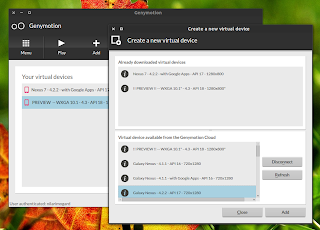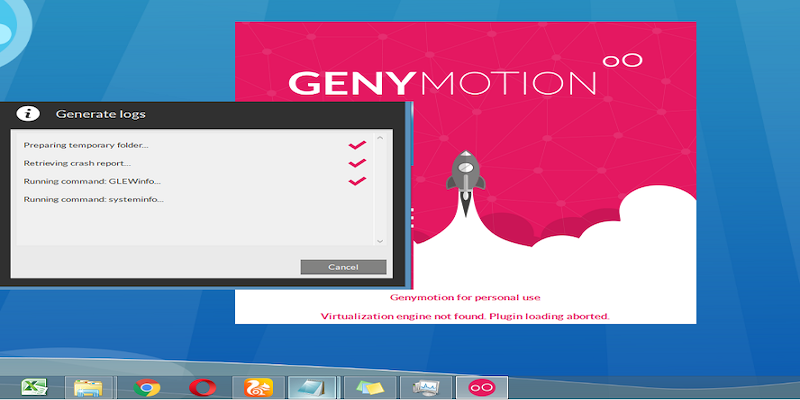
- #Android x86 emulator mac crash how to#
- #Android x86 emulator mac crash install#
- #Android x86 emulator mac crash android#
- #Android x86 emulator mac crash software#
Unfortunately I cannot provide the code to reproduce the issue.

Looking on SO about that message, it seams it could be related to some threading issue when manipulating Activities that are not "active". InputDispatcher: channel '9fa7335 my./my.login.LoginActivity(server)' ~ Channel is unrecoverably broken and will be disposed! Looking deeper in the logs there seem to be an issue related to the InputDispatcher: Most of them are SIGENV but the cause of it can vary, without any clear reasons. In most cases, the crash reason was printed in the logs. It's quite random regardless of the test order.Īlso, in very rare cases, the crash might not occur and all tests pass. This so-called crash can come as early as right before the 1st test could event start or happen right in the middle of the tests sequence. Test running failed: Instrumentation run failed due to 'Process crashed.' Reason: 'Instrumentation run failed due to 'Process crashed.''. On the emulator, most of the time, a test (as part of a test class file) using mockK feature will fail randomly with the following message:
#Android x86 emulator mac crash android#
Using MockK on Android UI Tests should work on any emulator running Android 9+ as it does on physical devices. I checked to make sure that this issue has not already been filed.I checked the documentation and found no answer.Now we need to find out the IP address of the Android VM and adjust file permissions on the run-as tool to support debugging properly.Once done with personalization, select Terminal from the list of apps:.As VMWare is emulating a wired controller, we won’t need WiFi: Select your language from the list and click on the button to the right: Once Android loads, it will show the customization menu.After you restart the VM, it will boot from the hard disk allowing to select the mode to start.
#Android x86 emulator mac crash install#

Select “Yes” as we will need to do some modifications to support debugging properly:

Finally, remove the hard disk and add an IDE one instead of it:.Then mount the ISO image you downloaded to the virtual CD drive:.First, switch the network to the bridged mode so that the emulated device gets an IP address we can connect to: Before completing the wizard click “Customize hardware”:.Note that VMWare will create a SCSI disk by default and we will have to replace it with an IDE one: Proceed with the default parameters for the disk.Specify the VM name and the folder where you want to keep it:.Select “Linux” as the operating system:.Select “I will install the operating system later”:.Open VMWare and begin creating a new typical VM:.Using VMWare has an advantage of much faster simulation speed, however it will only simulate the x86 Android system, hence if you want to debug an ARM-specific problem, you will still need an actual device or the slow ARM emulator.īefore you begin, install VisualGDB and download an x86 Android image from, a project providing Android images compatible with moder PCs. We will first setup a virtual machine, then install Android there and finally use Visual Studio to debug the San-Angeles sample on it.
#Android x86 emulator mac crash software#
Most of the techniques described here will also work with other virtualization software like VirtualBox.
#Android x86 emulator mac crash how to#
This tutorial shows how to accelerate the Android App development using virtual devices by replacing the slow Android emulator with faster VMWare.


 0 kommentar(er)
0 kommentar(er)
